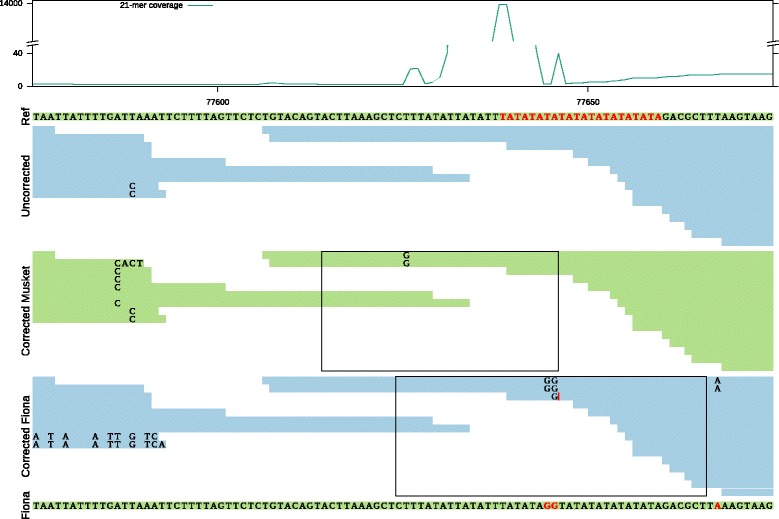Fig. 6.

Alignment of uncorrected and corrected reads by Musket and Fiona in the neighborhood of a contig breakpoint: Lost true k-mer can result in two different scenarios. The first track shows the 21-mer coverage of the uncorrected data. The second track (Ref) shows a part of the reference genome, which is assembled into one contig from uncorrected data. A frequently occurring AT-repeat is indicated in red. The third track (Uncorrected) shows the alignment of the uncorrected reads to the reference. The fourth and the fifth tracks (Corrected Musket and Corrected Fiona) use these same alignment positions, but with the sequence content of corrected reads by Musket and Fiona. The sixth track is the assembled contig from corrected reads by Fiona. The rectangles indicate the regions in corrected reads by Musket and Fiona that no longer contain any true 21-mers. The coverage is low around an ‘AT’ repeat with coverage 13750x in the uncorrected data. Musket incorrectly changed two bases, breaking the connection between two groups of reads. In contrast, in the Fiona-corrected reads, the connection is not lost. Instead the lost true k-mers in Fiona appear as mismatches in the assembled contig
